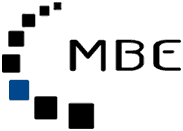
BURST: Breaking Limits Using Record Enabling Silicon Technology With Photonic Management
Ansprechpartner
Dr. Udo Römer
Tel.: +49(0)5151-999 313
E-Mail: u.roemer@isfh.de
Project website: https://burst-project.eu/
The BURST project supports the efforts of a strategic European IBC (interdigitated back-contact) c-Si technology by improving the power conversion efficiency towards the practical limits. In BURST we strife to achieve efficiencies of at least 26% with thin (<80 μm) and 27% with thick c-Si cells, without relying on critical materials like indium or silver. Leveraging on the expertise ISFH and its partners, the BURST consortium will develop the next generation of IBC cells with innovative and industrially scalable photonic light management, superior passivation schemes and Ag-free metallization.
Maximizing the absorption of light in ever thinner wafers requires advanced light management. We will apply light trapping based on optimized photonic structures aiming to achieve light absorption >99 % of the theoretical limit. BURST will transfer lab-type fabrication processes to cost-effective, high throughput industrial fabrication methods (TRL5) by using high precision, rapid laser patterning and atmospheric dry etching.
Advanced passivation and passivating contacts are essential in preventing recombination and harvesting the extra charge carriers generated from the advanced light management. BURST’s cell front side will achieve excellent passivation (>>750 mV) and high transparency.
We will apply Aluminium and Copper as inexpensive and abundant materials with low-cost techniques to ensure a low-resistive contact (<1 mOhm.cm²) to the passivating poly-Si contact of the Ag-free BURST IBC cell.
Finally, the high-efficiency BURST cells will be assembled into mini-modules supplemented by detailed analysis of the costs, environmental impact, supply security and circularity to demonstrate the advantage of BURST technology in relevant environments.
Partner








Duration
01.05.2024 – 30.04.2027
Funding
This project receives funding from the European Union’s Horizon Europe research and innovation programme under grant agreement No. 101146684.
